| Matthew Christensen |
![Marjorie (Midge) Wood sits, smiling, at her drafting table]](https://www.perisphere.org/wp-content/uploads/2025/04/Figure-1-1024x555.png)
Vertigo plays on phenomenal 70mm at the Heights Theater from Wednesday, April 23rd, through Thursday, April 24th, as part of our collaboration on the Hitchcock Festival. For tickets, showtimes, and other series information, visit trylon.org.
“News Item”
Men seldom make passes
At girls who wear glasses. -Dorothy Parker
Let me start off by saying that I never fully understood Scottie Ferguson’s obsession with Madeleine Elster in Hitchcock’s Vertigo. I mean, I get why he falls for her. Kim Novak—playing the part in perfectly coiffed white-blonde hair, speaking in a smoky, black coffee voice, wearing a refined grey suit that seems to suggest both sexual availability and deferment—oozes the kind of elegant perfection that might set off anyone with an obsessive bent.
Especially if she were dead.
But my eclectic, little gay mind does not think like that of Jimmy Stewart’s tormented Scottie. No, I am the guy who notices, and often prefers, the secondary characters: the girlfriends and sisters of the protagonists, the geeky sophisticates, the “his-girl-Fridays” who nearly attract the attention of a protagonist, but not quite enough to sustain his attention. This has long been a near obsession for me (there’s that word again!). I remember reading Anne Frank’s diary in junior high school and thinking more about her older, demurer, sister Margot than the energetic Anne. On Saturday mornings Velma Dinkely always seemed a better investigative partner than curvy red-head Daphne Blake on Scooby Doo. And in The Big Sleep I wanted Bogart to have more scenes with the spectacle-wearing Dorothy Malone (referred to simply as the Acme Bookstore proprietress) than Bacall.


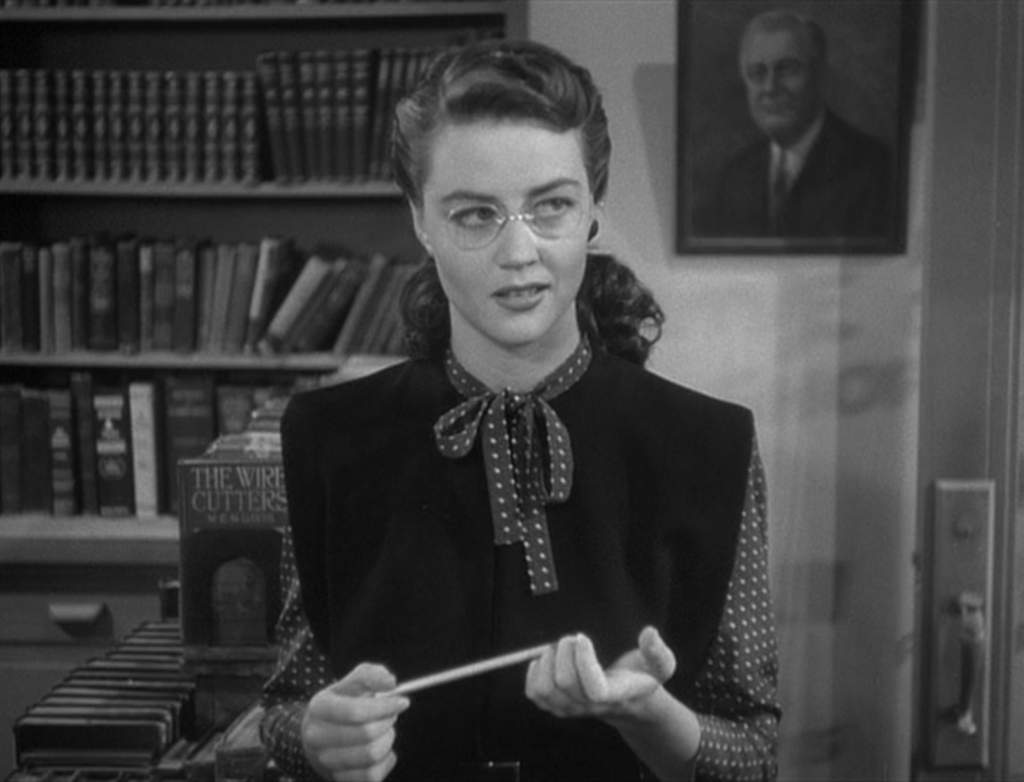
So, when Mom and Dad popped Vertigo into the VCR one Friday night in the 80s after getting us kids hooked on Hitchcock with Rear Window, it was not Madeleine whom I was obsessed with. No. It was Marjorie Wood (Barbara Bel Geddes), Scottie’s ex, affectionately known as Midge. I was captivated. Who in the name of Blossom Dearie was this vision of hip-to-be-squareness? I was mesmerized by every scene she was in and anticipated the next. Imagine my surprise then when, in the second half of the film, she is simply no longer there. Imagine my surprise when I discovered a deleted last scene with Midge in a DVD extra.
But I am getting ahead of myself. Vertigo tells the story of police detective John Ferguson (a.k.a. Scottie to everyone but Midge), a man with crippling (at points emasculating) vertigo caused by a San Francisco rooftop chase that leaves him hanging from a gutter and a police officer splattered on the ground several stories below. Former classmate Gavin Elster (Tom Helmore) hires Scottie to trail his wife Madeleine, whom he believes is possessed by the spirit of long dead, tragic, Carlotta Valdes. Scottie follows Madeleine in a series of repeated, extended scenes: to an alley entry of a flower shop, to the Palace of the Legion of Honor, to the mission of San Juan Bautista, to Golden Gate Park. When she jumps into the bay in an apparent suicide attempt, Scottie rescues Madeleine and brings her to his home to recover. A love affair soon follows with Scottie trying to rationally exorcise the spectre of Carlotta from Madeleine’s mind. In a dramatic end to the first act, Scottie’s vertigo prevents him from stopping Madeleine from throwing herself off the bell tower of the church at San Juan Bautista. Scottie is shaken out of his subsequent nervous breakdown when he sees Judy (described in the trailer as a “tawdry redhead”), who resembles the dead woman. The second act of the film shows Scottie’s obsessive transformation of Judy into Madeleine, only, we know something Scottie doesn’t. I won’t go into the plot too much more as I don’t want to give away any of the fun. Suffice it to say, this slow burn classic does not disappoint.
Anyway, it doesn’t matter because my obsession in this piece is with Midge, our chic, glasses-clad girl next door who dreams of making it big as an artist in Frisco, and not Madeleine. The only problem is Midge is obsessed with Scottie (a.k.a. Johnny-O to Midge, something akin to Daddy-O, which makes her hep). What kind of twisted cinematic love quadrangle have I gotten myself into?
Midge, forever stuck in the friend zone, as one student of film aptly expressed it, is introduced to us in the beginning of the film in her studio apartment working at her drafting table whilst chatting with Scottie about his condition. Her geek chic chestnut-colored round glasses, her thin, not quite tight-fitting cardigans and practical skirts seem to belie her profession as a fashion illustrator. Her 1950s hipster sense of style is a set up for the revelation of Madeleine’s more sophisticated ensemble later on. In the exposition of this scene we learn from Midge that she and Scottie were once engaged “three whole weeks.” The moment is punctuated by a high angle close up of Midge that expresses the continued depth of her feelings for Scottie despite the fact that she broke off the engagement.
The obvious age difference between Midge and Scottie creates further contrast that is visually reinforced. Midge, young, bright, and energetic, seems somehow ill-suited to the greying, wooden Scottie. They resemble a 1950s version of Enid and Seymour from Ghost World (a film that centers its glasses-clad, geek bohemian, Enid, giving her far more
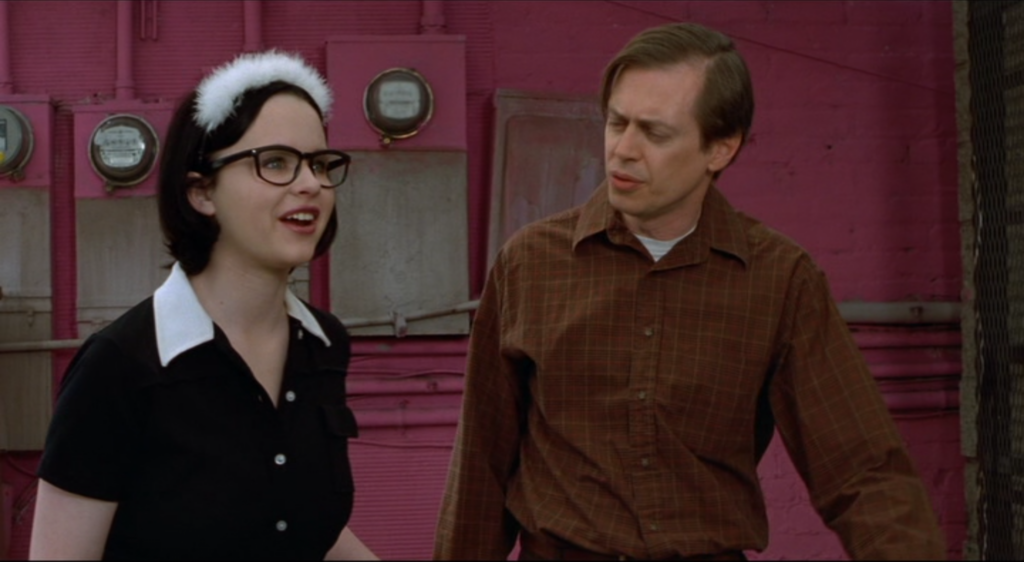
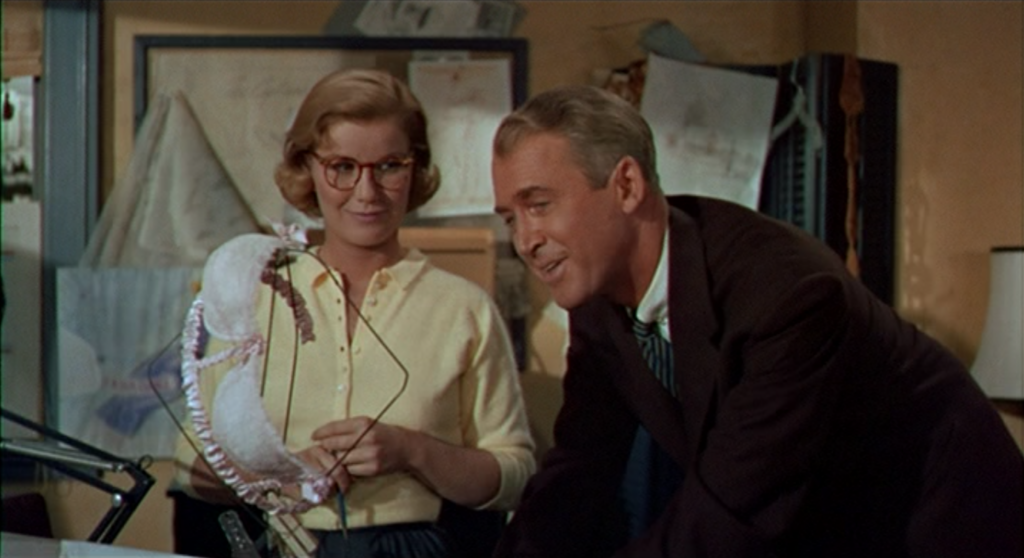
agency when it comes to relationships). The age gap not only prepares us for Scottie’s more mature romantic relationship with Madeleine, but actually sets up Marjorie herself as the mature one in this love triangle. And it may well be the fact that Midge seems to be the “only grown up in the room,” as they say, that most contributes to her failure with Scottie. Sure, she has a deep yen for Scottie, but we get a sense that even without him, Midge will carry on independently. What she seems to want is not so much a lover as a dependent, someone to need her. And Midge, ever determined to stay in the loop, takes up her own obsessive shadowing. She trails her ex just as he trails Madeleine. And this is what makes Midge a multifaceted supporting character—just my type to obsess over in films. She quickly sees the Valdes possession story for what it is, an implausible story that allows Scottie to save the vulnerable Madeleine. Yet Midge is unaware of her own propensity to do the same. Following his nervous breakdown, Midge sweeps in with her Mozart LPs and takes on the role of mother in a doomed attempt to heal Scottie. Hitchcock reinforces her ultimate failure with Scottie when, after she acknowledges to a doctor that he is still in love with the now dead Madeleine, she walks down the lonely sanatorium corridor exiting off screen and out of our lives.
Although we know our free-spirited his-girl-Friday will be just fine, geek chick spectacles intact, we still feel the loss of this character who seemed to anchor Scottie to reality, reminding us of the dangers of obsession. On my DVD copy of the film (yes, I still collect DVDs of my favorite movies), there is a short documentary on the making and restoring of Vertigo. In it, we get a rare treat: an unreleased final scene to the film that takes place not long after the familiar ending we all know of Scottie, atop the mission bell tower, finally cured of his vertigo, at a loss as to how to process yet another death of a lover. This cut scene takes us back to Midge’s studio apartment (a sort of reality landing pad) where she, a 50s Mary Ann Singleton in a pink robe and biting her nails, listens to news over the radio of the pursuit of Gavin Elster for the murder of his wife. Scottie walks in and she pours them both a stiff one. They face one another before she sits before her drafting table again. Originally shot to placate censors who needed to reinforce that crime does not pay, one can see why it was ultimately cut. Awkward and oddly quiet, it screams anti-climax. But on another level, it is just the ending for someone like myself who sees Midge as an individual who occupies a more vital space in the film. Overly mothering she may have been in earlier scenes, but here Midge’s “sadder but wiser” demeanor lends pathos to her geek mystique.
I would argue Hitchcock himself sees Midge and other similarly spectacled characters in his films in the same way. Whether placing them on the periphery of the story (like people we recognize, but can’t quite place) or in some cases, surprisingly, centering them, Hitchcock invites us to notice them, keep our eye on them, know that they have our number. And I think this touches the heart of my own obsession with Midge and her ilk. I, with my similarly round, plastic glasses, identify with the ones who don’t take center stage, the ones who seem to operate outside of the cultural zeitgeist, the ones who have experienced the somehow satisfying, but oh, so melancholy feeling of unfulfilled longing. So, let’s end this piece with a tribute to Hitchcock’s side obsession with bespectacled women. Here’s to geek chic!
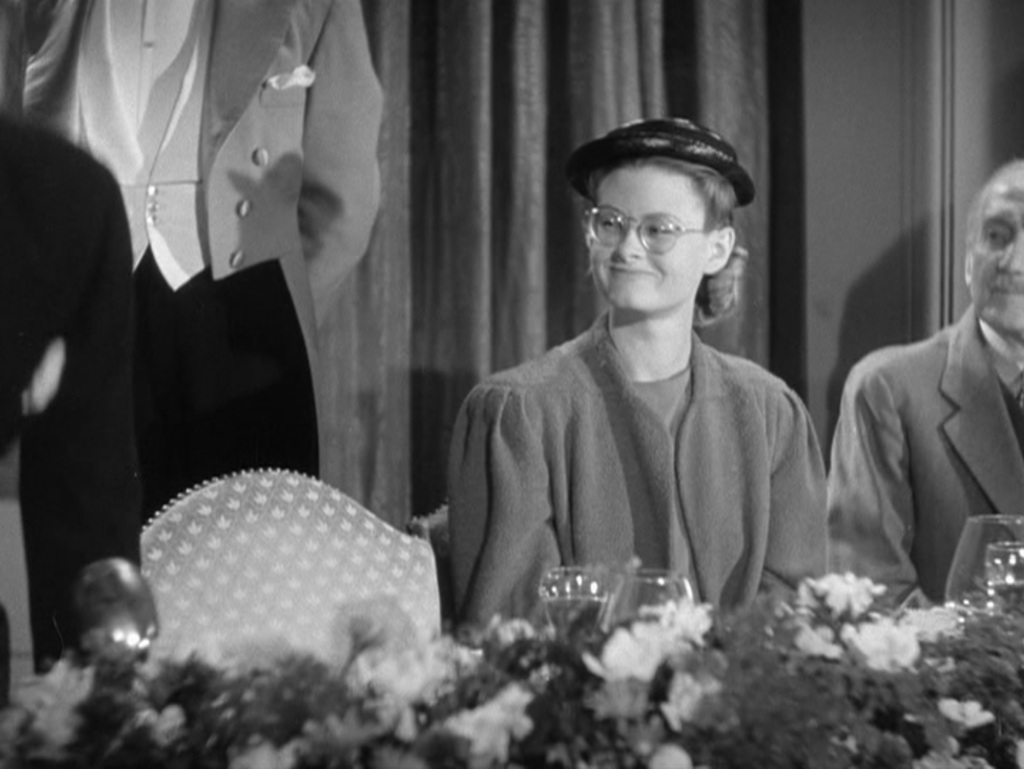
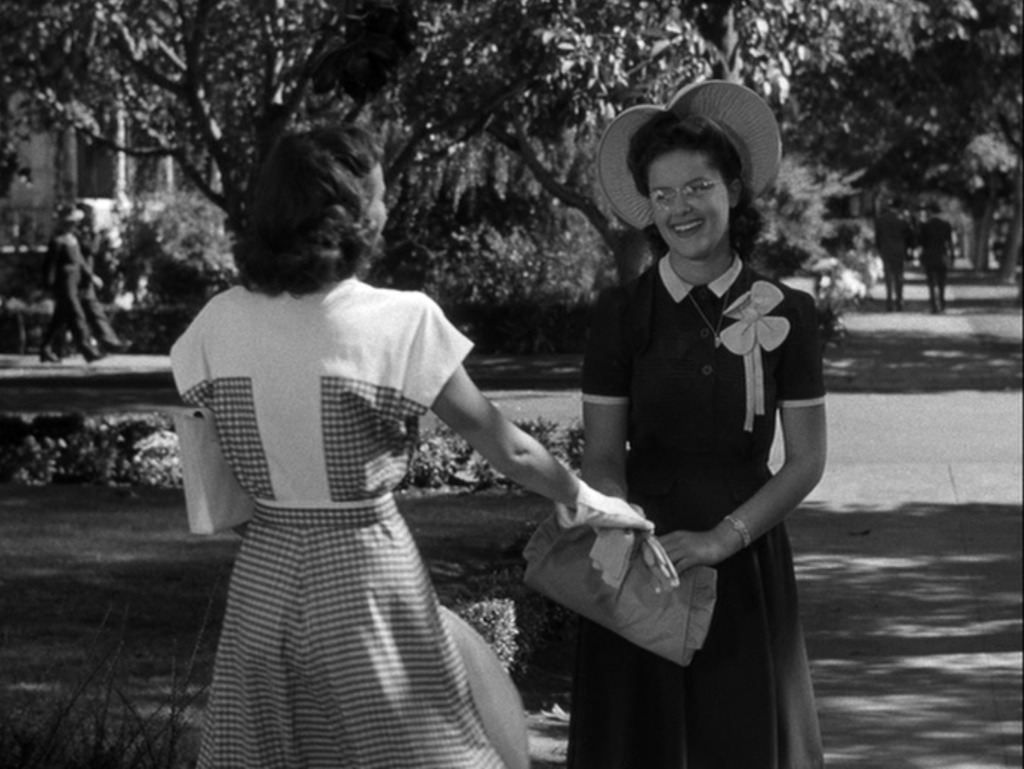

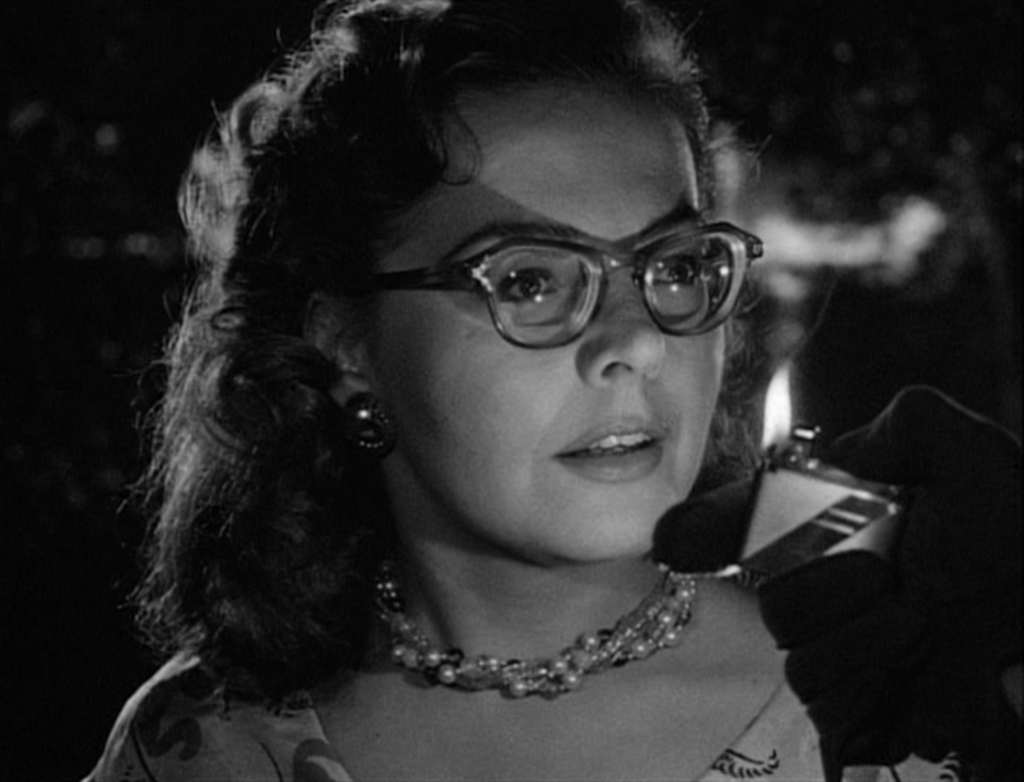
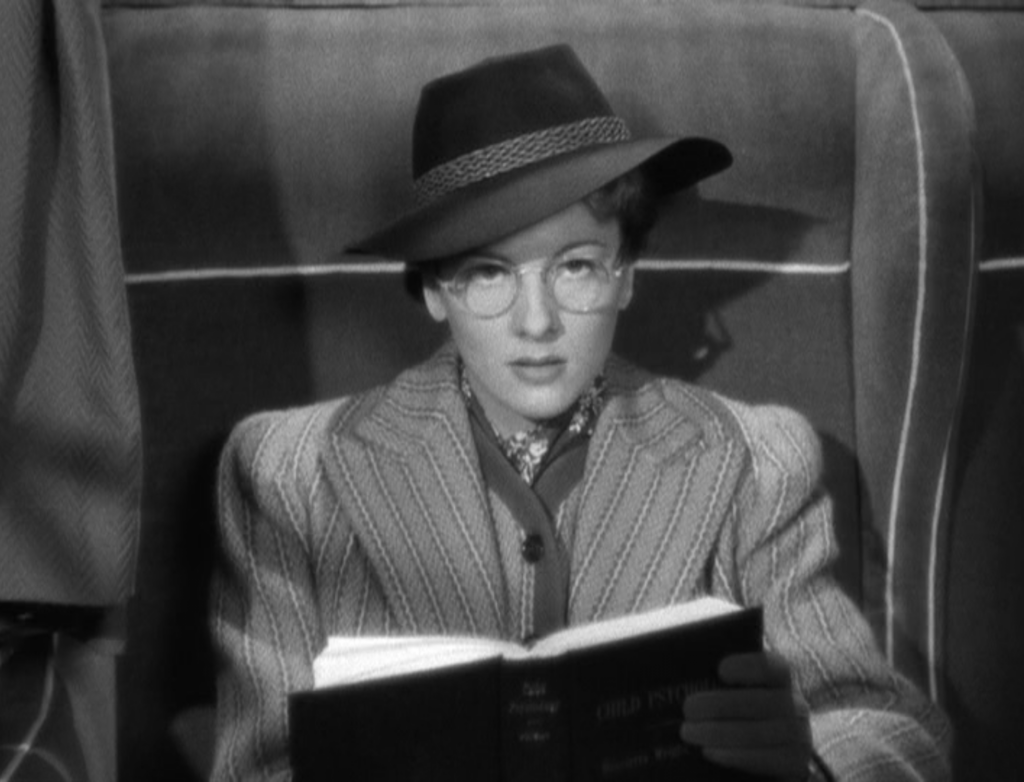

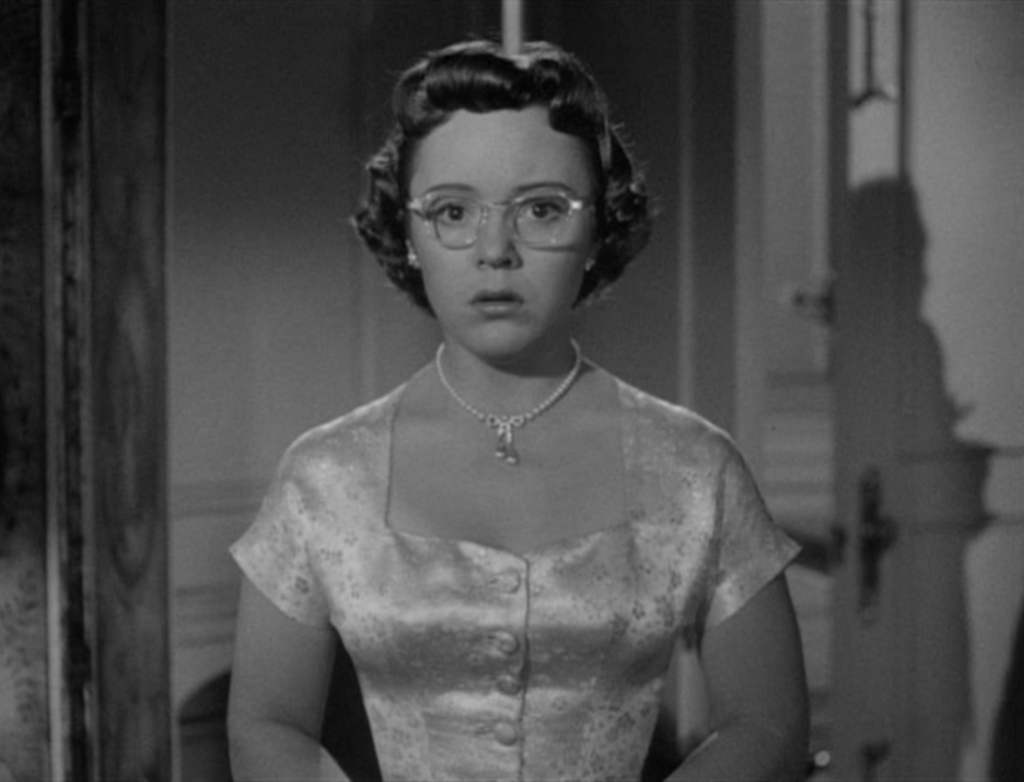
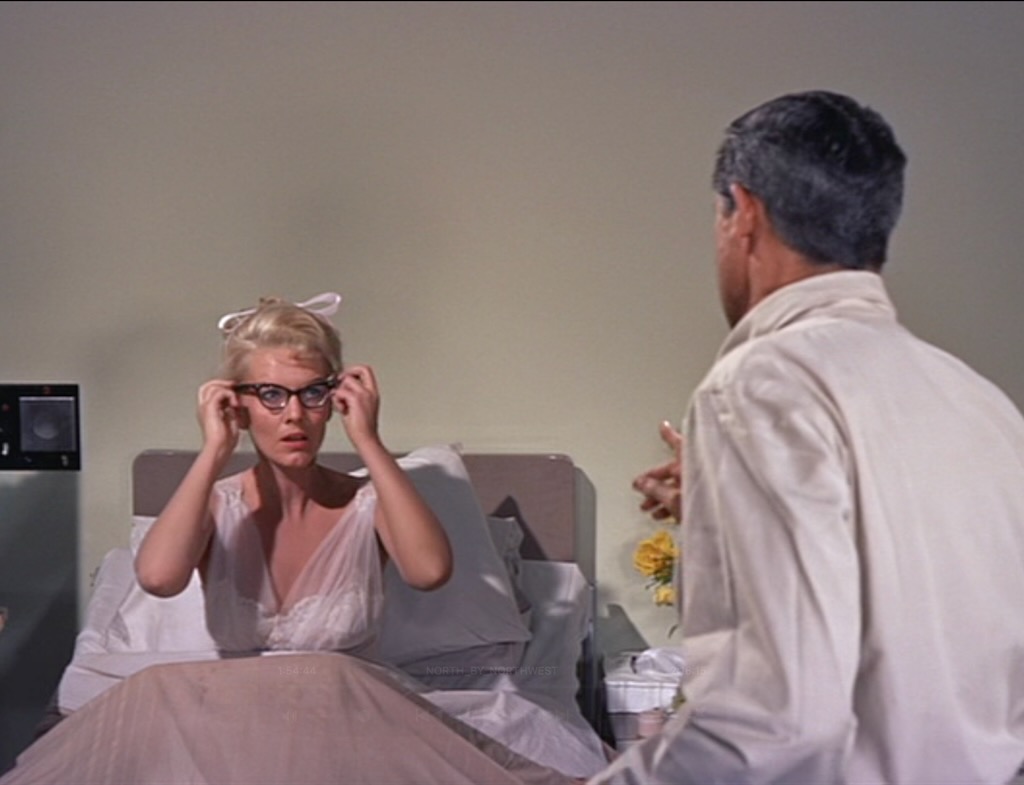
Edited by Olga Tchepikova-Treon
